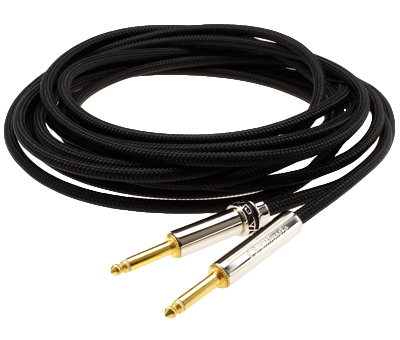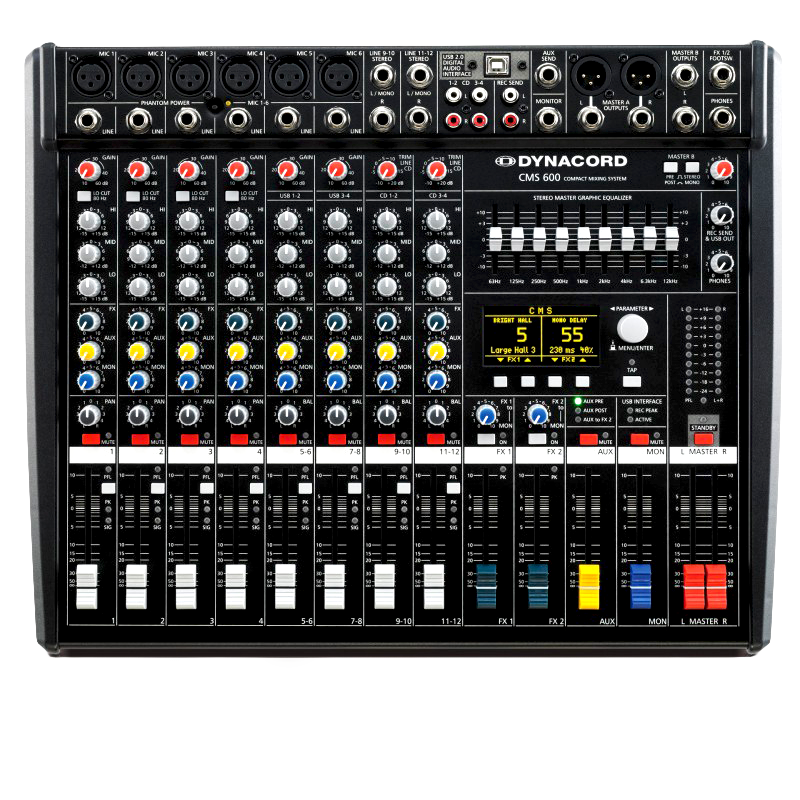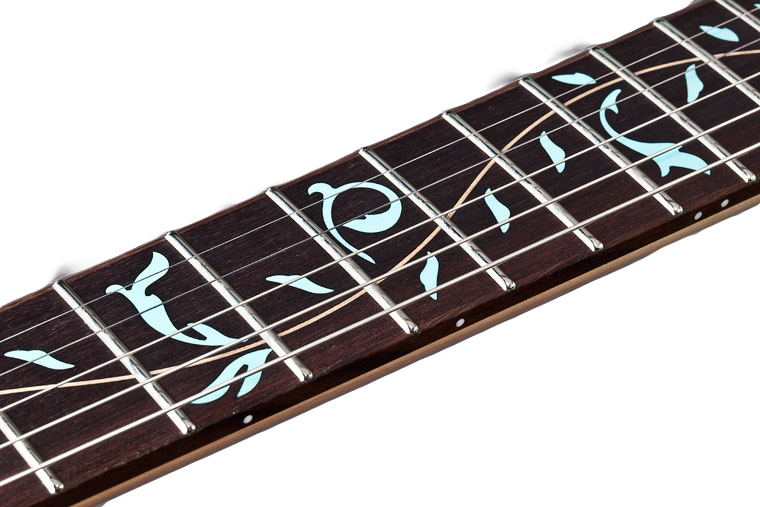Guitar Pickups

Guitar Pickups
GUITAR PICKUPS

WHAT IS A GUITAR PICKUP?
A pickup device is a transducer that captures or senses mechanical vibrations produced by musical instruments, particularly stringed instruments such as the electric guitar, electric bass guitar, and converts them to an electrical signal that is amplified using an instrument amplifier (such as a guitar amplifier) to produce musical sounds through a loudspeaker.
HOW DO PICKUPS WORK?
The Magnets in a pickup generate a magnetic field all around them that passes up through the strings.
The Metal strings will partially magnetize, and when they vibrate, they send a very fine electric current flow through the wire pickup coils. To produce sound, an electric guitar senses the vibrations of the strings electronically and routes an electrical signal to an amplifier and speaker.
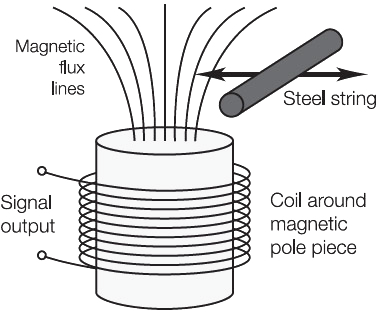
PICKUP CONSTRUCTION
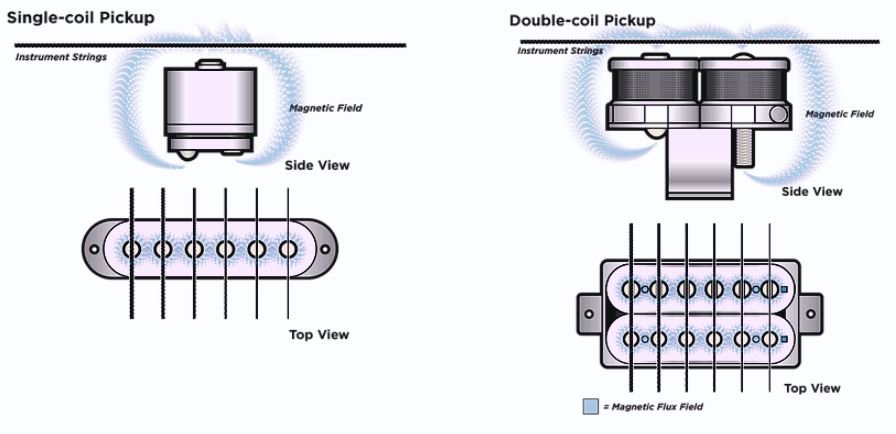
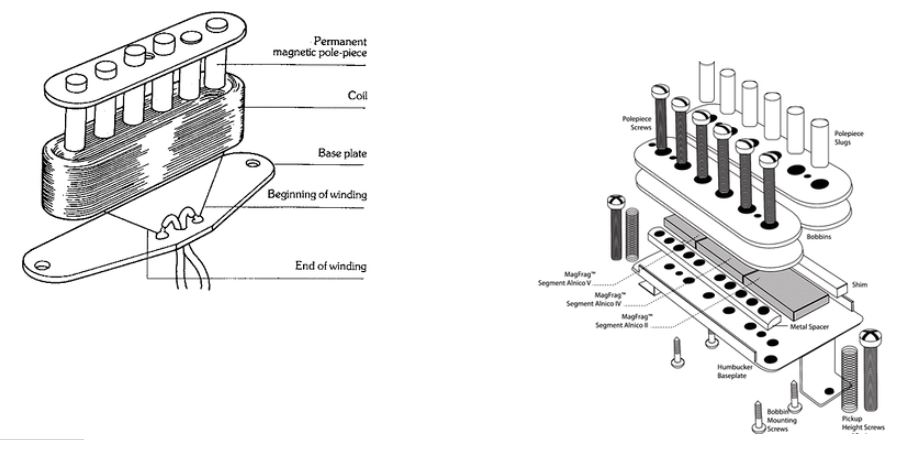
WHY CHANGE GUITAR PICKUPS?
As you progress in your guitar playing skills, you will find that you will be more intrigued to experimentation with different guitar gear when in search of identifying your own signature tone and sound as a guitarist.
Guitar Pickups can play a massive role in enhancing the tonality of a guitar and there are different pickups to look into, boasting particular specs for projecting various tones. Changing pickups assist in enhancing guitar features to improve tones and project the overall sound a guitarist is looking for, and this is the main reason guitarists choose to change their pickups where necessary.
TYPES OF PICKUPS
There is typically only two types of Pickups available - Single coil & Double coil | Humbucker. There is ofcourse hundreds of brands of pickups with particular specs available, but all of them are based off these two designs.
The most prominent difference between the two is that single coil pickups create electrical noise letting out a buzzing or humming sound. Humbuckers were specifically designed to prevent this buzz, hence the name "humbucker"
SINGLE COIL vs HUMBUCKER: FEATURES
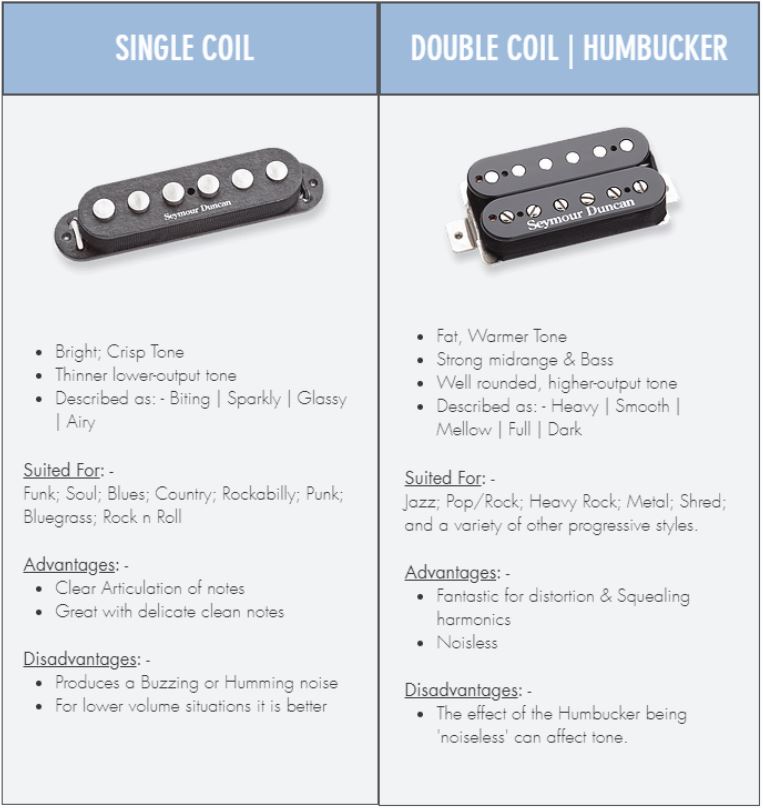
UNDERSTANDING HIGH vs LOW OUTPUT PICKUPS
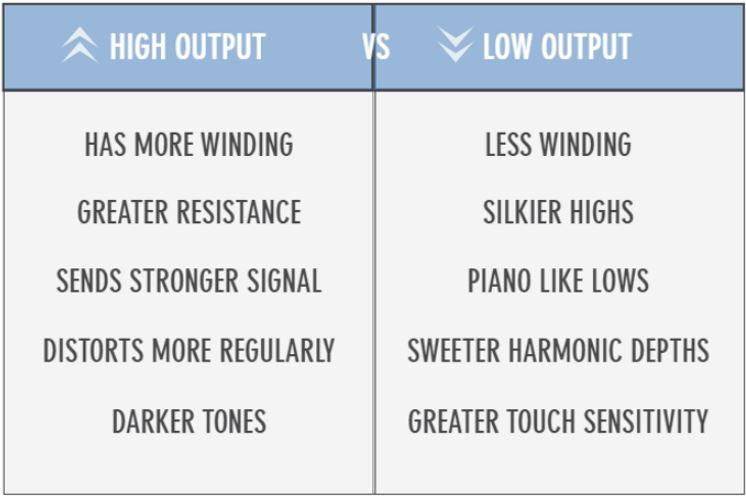
High and Low output is very simple - The higher the output = The more distortion | by sending stronger signals.
With a low output pickup, you really wouldn't hear that much of a difference, but if you increased it to the moderate output level, you will then start to hear distortion come through.
On high output level, Distortion comes through dominantly, aggressively & loudly.
The purpose of higher output levels is to increase the sound of distortion to get a heavy, grungier kind of tone.
There are a few methods of creating the distortion a guitarist is looking for i.e. by using amplifiers designed for distortion sounds, using effects pedals etc.
Using a high "Hotter" output pickup is not always the best option as it distorts regularly; but as with everything in guitars and music, it all boils down to experimentation, and good old fashion trial and error when on the path to finding your own sound. As mentioned before, there are a few ways of increasing distortion other than having high output pickups. For example: Distortion can be increased by dialing into a more distorted amp and if you're looking for a more clear sound you can dial into an amp designed not to distort. There are specific effects pedals that help increase distortion as well. Check out 'Pedals' or 'Amps' for more info.
Note: - Distortion and overdrive are forms of audio signal processing used to alter the sound of amplified electric musical instruments, usually by increasing their gain, producing a "fuzzy", "growling", or "gritty" tone.
* High output pickups are used mainly by aggressive rock & metal guitarists looking for that more aggressive, dark tone.
PASSIVE & ACTIVE PICKUPS | HYBRID & P-90 PICKUPS
Passive Pickups
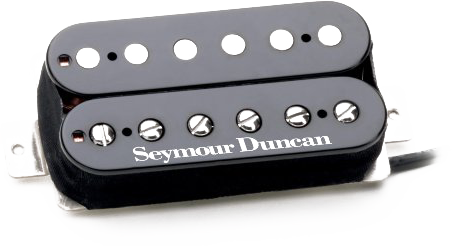
Passive Pickups are usually constructed using wire wound around a magnet, and possess the ability to generate electrical potential without the use of external power. They generally provide a softer sound in comparison to the Active pickups.
Passive Pickups are the most commonly used by guitarists in the industry.
Active Pickups
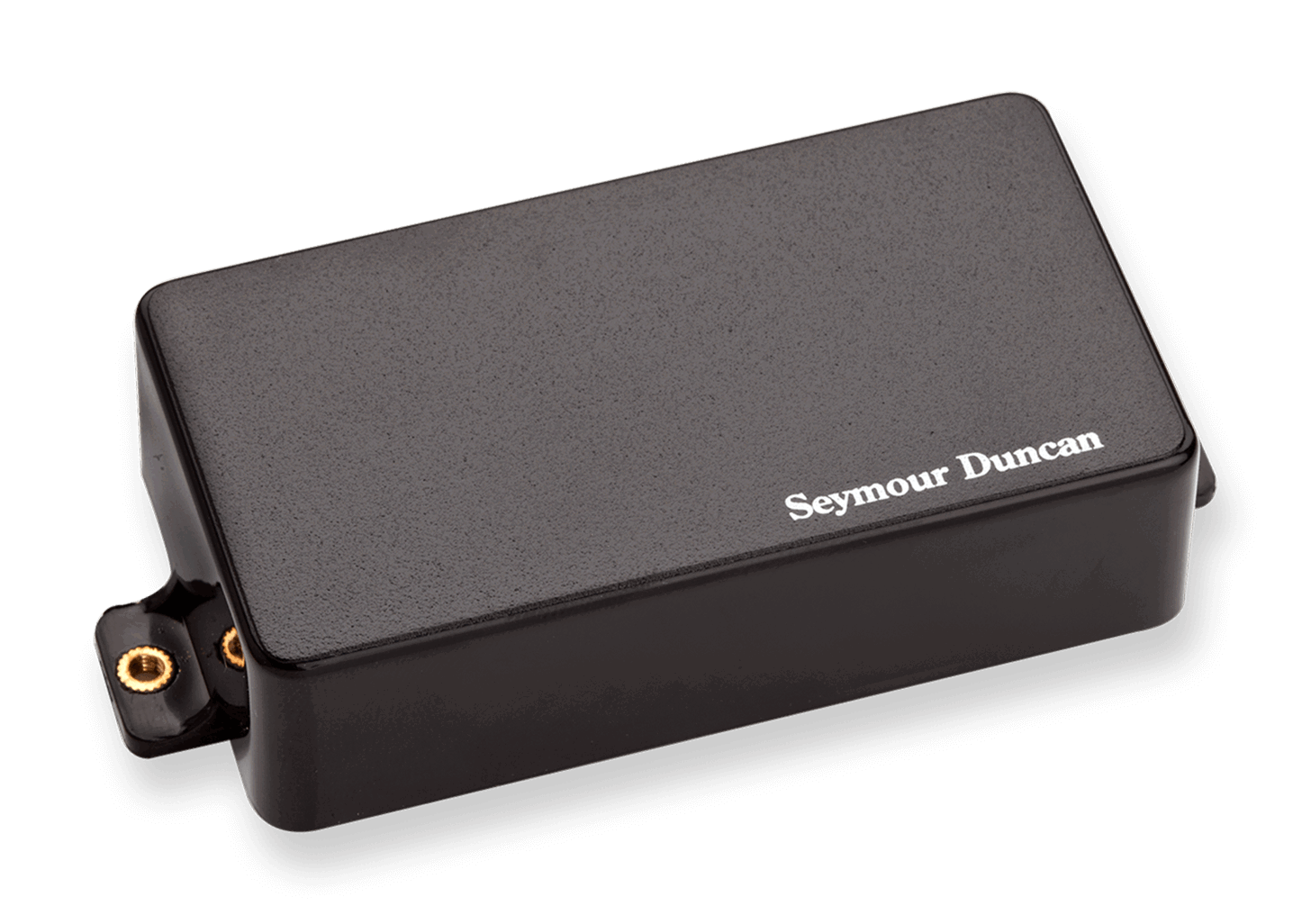
Active pickups make use of the same type of reluctance sensors as a passive with some features such as coil wire size and number of windings varying. Active pickups make use of a battery powered preamplifier to enhance overall output and to shape tone. Active pickups minimize noise; maximize signal and produce louder sound. They are also the highest output pickups available. The main disadvantage of active pickups is the use of a Battery power source as this is limiting to circuit design & functionality, and can also be somewhat of an inconvenience.
Noticeable Active pickup guitar players:
James Hetfield - (Metallica) - Dave Mustain - (Megadeth)
Mick Thomson - (Slipknot) - Lindsey Buckingham - (Fleetwood Mac)
Dino Cazares - (Fear Factory) - Shaun Morgan - (Seether)
Hybrid Pickups
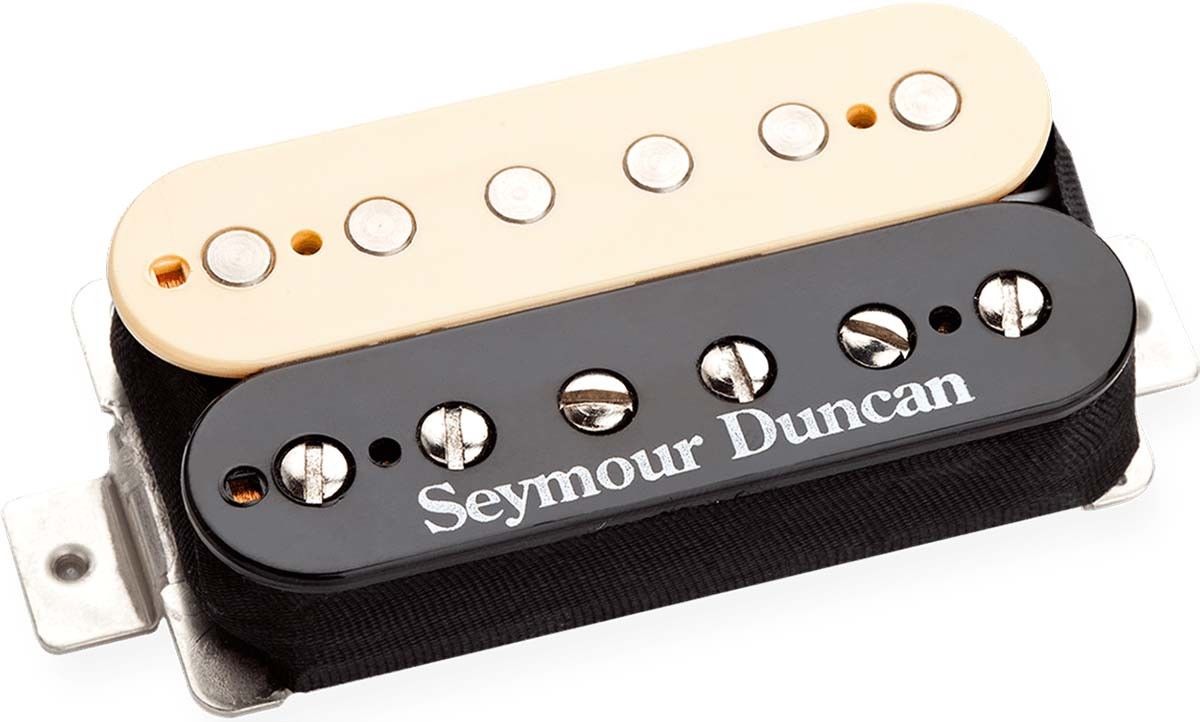
Only a fews years ago, the Hybrid pickup made it's debut using a simple concept: Take 1 coil of a particular PAF type pickup & 1 coil of a hot-rodded PAF style pickup; pair them together and you get the best traits of both and the drawbacks of none.
Manufacturers then quickly started looking into what combinations & pickups could be paired into hybrids. Today there are many hybrids available boasting incredible specs.
P-90 Pickups
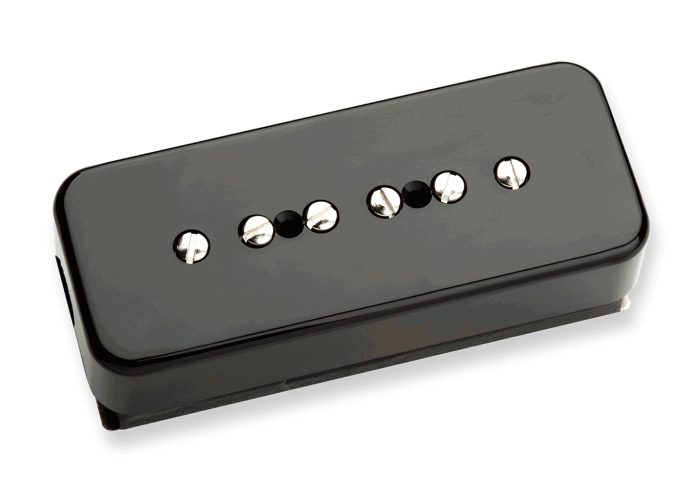
The P-90 is a single coil electric guitar pickup originally produced since around 1946.
Being single-coil design, the tone is brighter and more transparent than a humbucker. The tone features some of the single-coil twang, with large amounts of midrange and often described as "thick".
VINTAGE PICKUPS
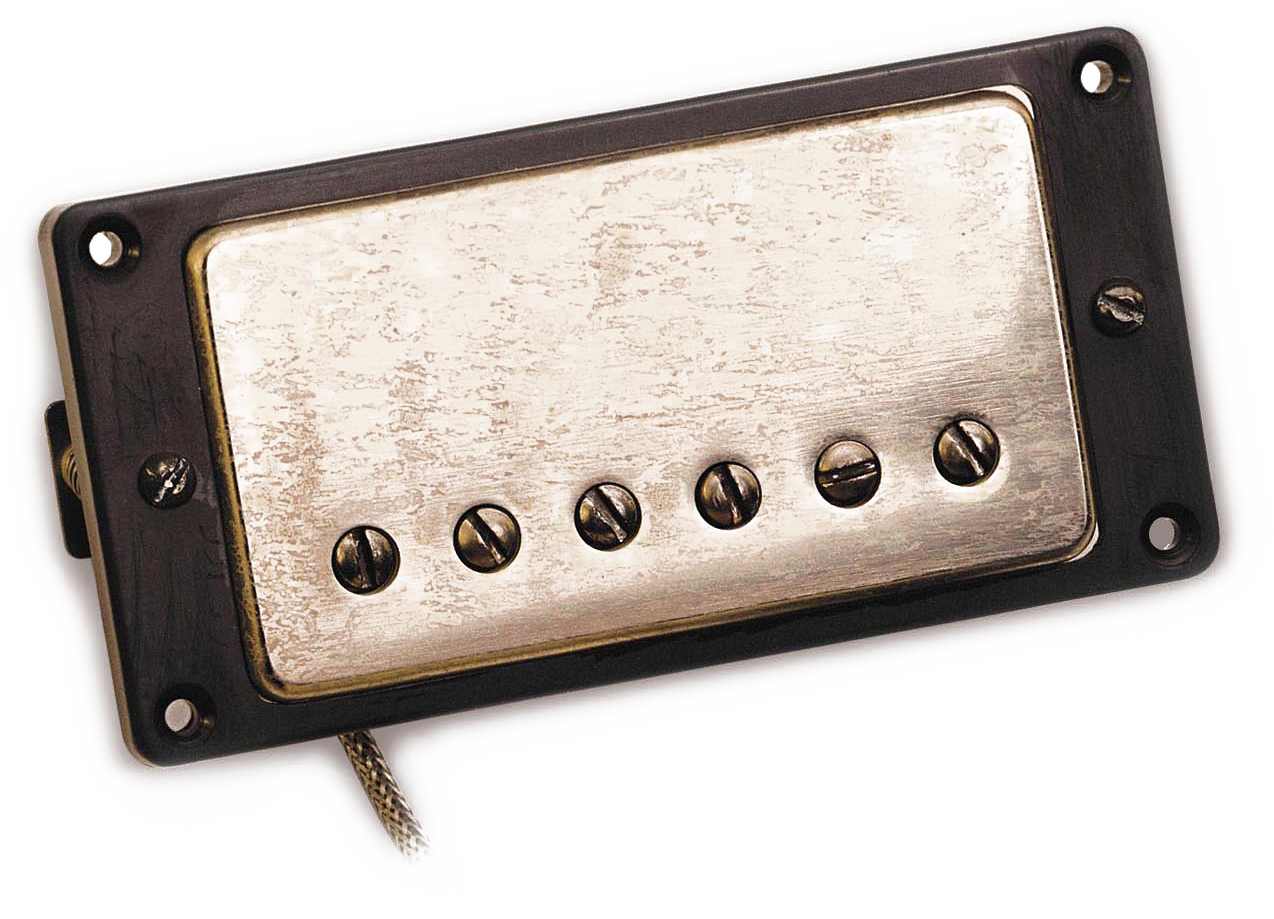
A Vintage pickup is an old pickup; or technically a pickup with the specifications of a pickup made a long time ago, to replicate a popular tone of an older era.
Some vintage pickups are made from new old stock parts from the period they were originally made, but this is seldom and very costly.
Most Vintage pickups today are made with modern materials, but assembled to the exact specifications of the older pickups.
PICKUP CONFIGURATIONS
Electric guitars come with a mix of up to three humbuckers and single coils, or only one type. This is called 'Pickup Configuration'.
Some guitars come standard with 3 single coil pickups identified as (S-S-S) on the configuration grid. Some come with two Humbuckers and is then identified as (H-H).
Here is a grid to help identify the various configurations you may come across in your guitar specs:
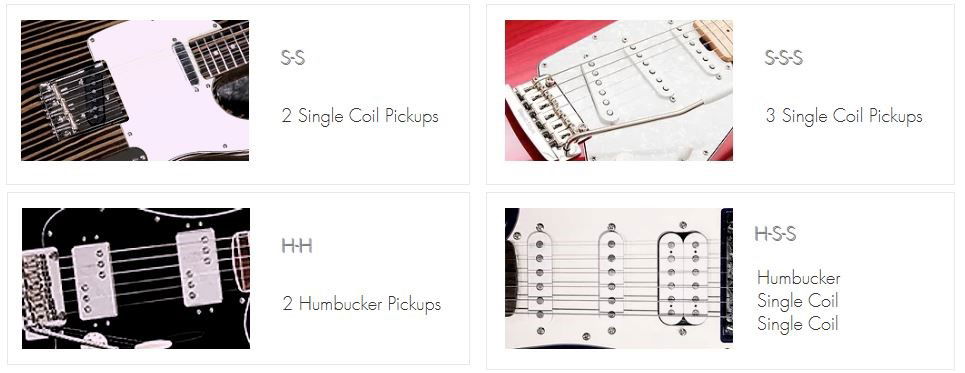
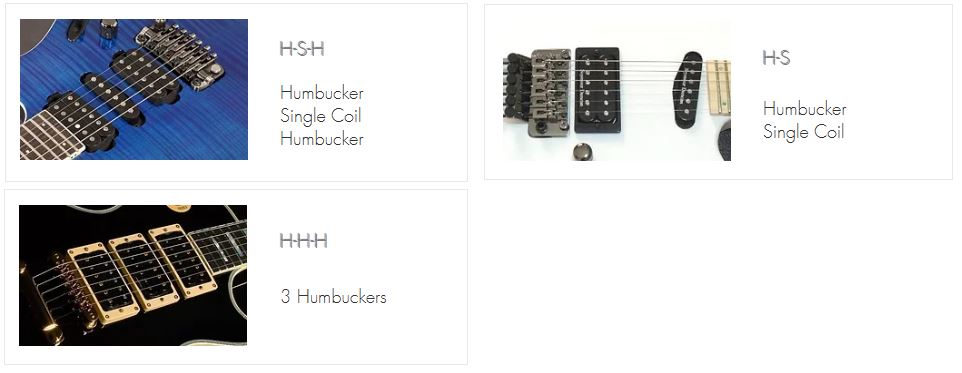
WHAT ABOUT ACOUSTIC PICKUPS
When you fit a pickup to an Acoustic Guitar, you are amplifying your playing abilities without having to perch in front of a microphone, as well as enhancing overall guitar tone.
There are typically 3 types of Acoustic Pickups: -
Under-Saddle Piezo | Piezo Pickups
Soundboard Transducer | Microphone Pickups
Soundhole Pickups
Under-Saddle Piezo Acoustic Pickups
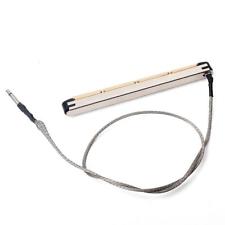
An 'Under-Saddle' Pickup sits under the saddle, whereas a 'Bridge Plate' Pickup sits inside the guitar, under the bridge. A Piezo pickup is a type of microphone. It picks up the physical vibrations of the instrument converting it to voltage. Designed to catch the natural resonance sound of an instrument.
Soundboard Transducer Acoustic Pickups
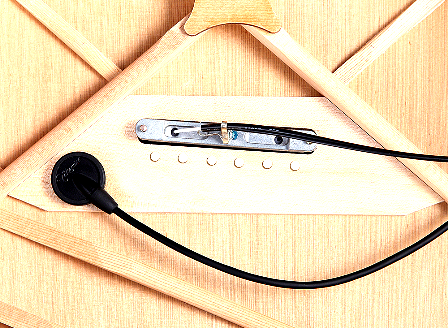
Soundboard Transducer Pickups are High quality microphones that mount inside the body of the guitar.
They pick up the vibrations of the top and generally produce a warm sound. Easy to install pickups.
Natural tone is important as these pickups recreate what they acoustically hear. If things get too loud, they are likely to feedback.
Soundhole Acoustic Pickups
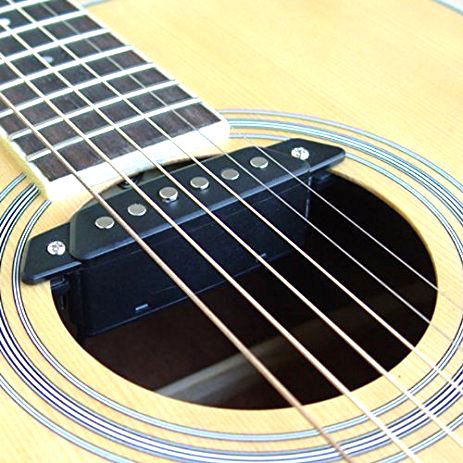
Soundhole Pickups are one of the easiest methods for amplifying a flat-top Acoustic Guitar, not equipped with electronics. This pickup is designed to fit into the soundhole using a mounting system and holds the pickup securely under the strings without marring the rosette or finish. Some soundhole pickups have built-in B String compensation, while others have adjustable pole pieces for even more precise control over string balance.
ELECTRIC GUITAR PICKUPS - THE SOUND PROCESS
WHAT ARE POLE PIECES - PASSIVE PICKUPS

The Pole pieces in a pickup device are the screws or posts running through the pickups coil, acting as a magnetic conductor for each string. Some designs might host one long pole piece or blade, to detect each string.
The two types of Pole pieces available are Steel Screw pole pieces or Magnetic pole pieces.

Adjustable poles can be raised or lowered to balance the loudness of each string while Fixed poles are inserted at heights intended to pre-balance output levels.
Magnetic Pole Pieces: - Produce a Clearer, Tighter, More focused sound with Crisp highs and firm lows
While......
Steel Screw Pole Pieces: - Produce a Thicker, meatier sound with more hair around the note.
HOW DOES THE MAGNET TYPE MOULD A PICKUPS SOUND
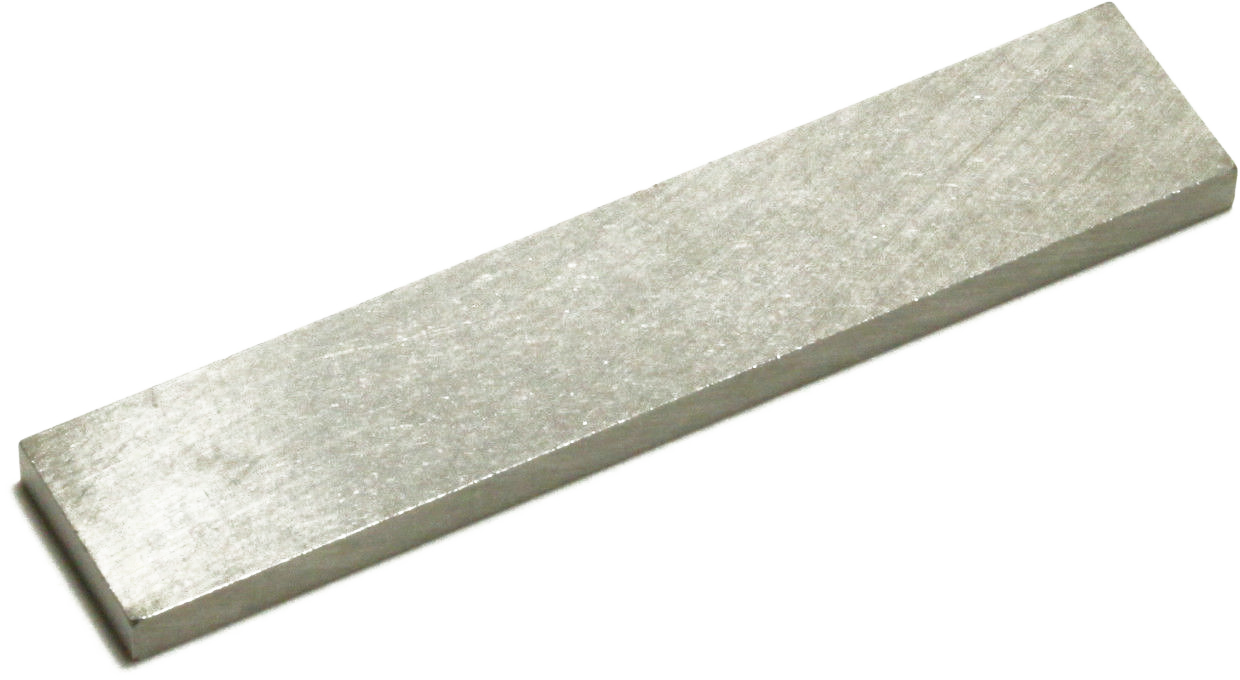
There are 2 main types of magnets used in pickup manufacturing - Alnico & Ceramic
For a better understanding, consider the Alnico as the 'Vintage' option and the Ceramic as the 'Modern' Version.
Note: - Something to be aware of is that similar magnet types are used very similarly in different pickup designs, changing sounds.
Alnico Magnet

Alnico magnets are the most commonly used type in pickup production. Alnico magnets are available in four different versions; each one hosting different characteristics, producing different sounds.
The four Alnico versions are: Alnico II; III; IV & V profiled using Roman numerals for 2, 3, 4 & 5
Alnico II: - Weakest Version; Softer & Sweeter
Alnico III: - Still soft, but somewhat bolder & richer than II.
Alnico IV: - Noticeably more punchier, with more definition in the highs.
Alnico V: - Far Bolder, Clearer & More aggressive.
Ceramic Magnet

Ceramic magnets are made from iron oxide, a material that became popular with magnet production in the 70's when it was discovered that these magnets, with a stronger design & sometimes over-winding the coils would create a high (hot) output pickup - (more distortion); thus winning the appeal of rock circles for having the ability to drive the front end of many tube amps into easy distortion. Ceramic magnets are also much cheaper to produce.
HOW DOES THE COIL AFFECT A PICKUPS SOUND
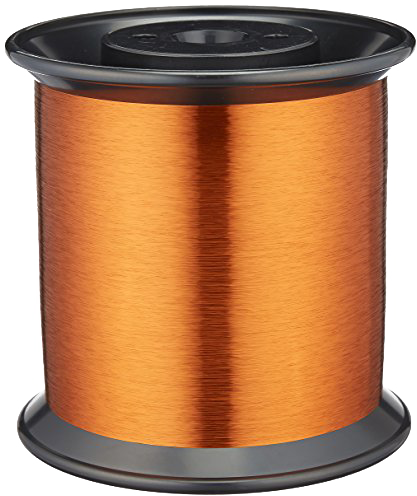
The Coil of pickups look very much the same as a spool of thread; consisting of fine copper wire though: - wound thousands of times around the bobbin or coil form.

Pickup coils are commonly wound anywhere from 4,000 to more than 10,000 turns of wire that is around 0.0025 - 0.0020 inches thick. The greater the number of turns means a higher pickup output. Too much winding though can result in weak treble response, and a flat sound.
Particular coils project different results based on the type, composition and shape of the magnets due to the incredibly interactive relationship between coil & magnet.
There are a few factors that affect the electrical signal a coil generates and thus affecting the overall sound of the guitar:
Length of the wire:
- The length of wire used - either mentioned as 'turns' or 'wraps', normally determines the overall pickup strength, identifying a low - high pickup output.
Gauge of the wire:
- The thickness of the wire used determines how much of the wire can fit onto the bobbin which helps 'shape' the sound.
Shape & Proportion of Coil:
- Tall, narrow coils sound brighter & more airy, while wider coils sound deeper and fuller.
WHAT IS POTTING? | POTTED vs UN-POTTED

Potting is the process of dipping pickups in wax to prevent internal components within a pickup from vibrating against each other.
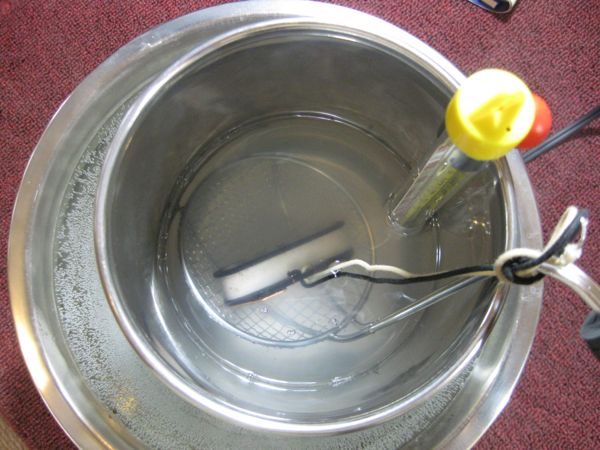
If the sound of your guitar vibrates the coil wire or anything loose inside a pickup, you'll get microphonic feedback.
To prevent this, a pickup is usually drenched in a pot of wax to dampen vibrations. Normally these vibrations are not a big deal; in fact, many great vintage pickups are not potted, but if you play a non-potted pickup in front of a loud, high gain amp, you will generate unwanted feedback.
TOP 3 GUITAR PICKUP MANUFACTURERS
1.


Seymour Duncan is an American company best known for manufacturing guitar and bass pickups. Guitarist and luthier Seymour W. Duncan and Cathy Carter Duncan founded the company in 1976, in Santa Barbara, California. Starting around 1983–84, Seymour Duncan pickups appeared in Kramer Guitars as standard equipment along with Floyd Rose locking vibratos, and can now be found on instruments from Fender guitars, Gibson guitars, Yamaha, Charvel,
ESP Guitars, Ibanez guitars, Mayones, Jackson guitars, Schecter, DBZ Diamond, Framus, Washburn, and others.
Visit Seymour Duncan's Official Site
2.

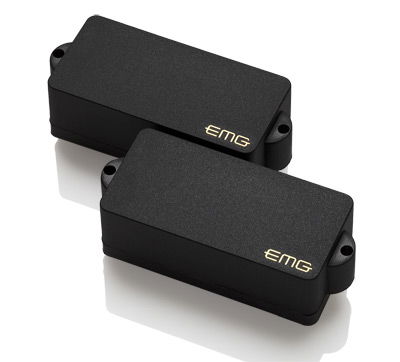
The company was founded in 1976 by Rob Turner in Long Beach, California. It was originally called Dirtywork Studios. The name was changed to EMG, Inc. in 1983 ("EMG" stands for "Electro-Magnetic Generator"). The company is based in Santa Rosa, California and manufactures guitar pickups and EQ accessories. Their active pickups are most popular among hard rock and metal artists such as Paradise Lost, Slayer, Metallica, Zakk Wylde, Rammstein, Judas Priest, and Primus but also used by others such as Prince, Vince Gill, Kyle Sokol, Steve Winwood, Steve Lukather and David Gilmour.
3.

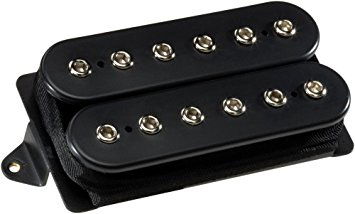
DiMarzio, Inc. (original name: DiMarzio Musical Instrument Pickups, Inc.) is a United States manufacturer best known for its direct-replacement guitar pickups. The company also produces miscellaneous guitar accessories, such as cables, straps and hardware.
DiMarzio became known for its Super Distortion model, which was the first after-market replacement guitar pickup. It was introduced in 1972 and is still one of the most popular models.


